Winegrower Côtes-du-Rhône
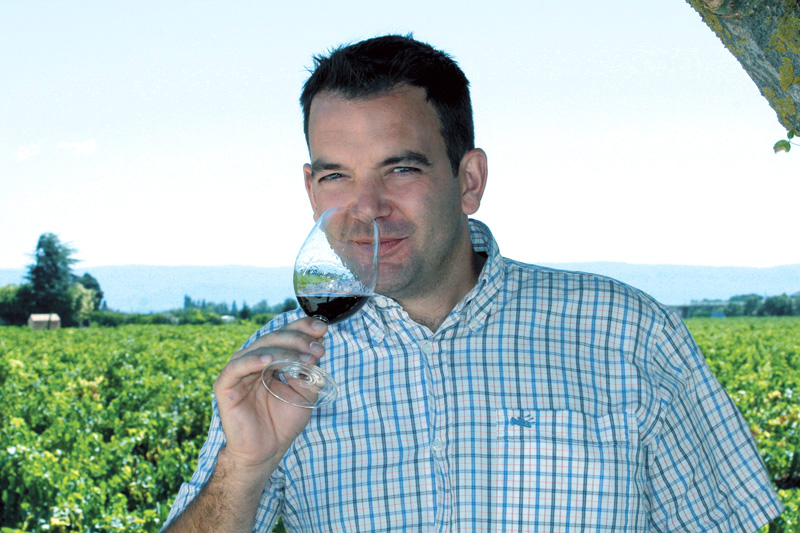
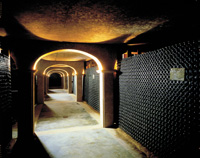
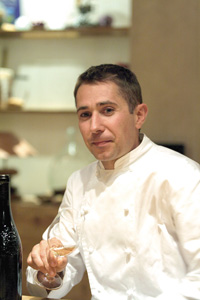
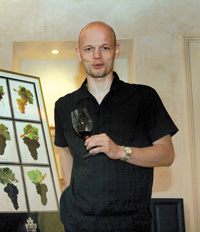
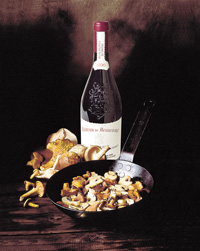
On the day I visited a northerly wind had settled in the Rhone Valley. The Mistral makes temperatures drop and ensures healthy conditions for vines. Thomas Perrin is a truly contented man. He has worked for the family firm since 2000. He qualified from a business school and perfected his skills working for three years for the Pernod-Group. He represents the fifth generation of winegrowers at Château Beaucastel.
The quality of wines made at Château Beaucastel contributes to maintaining the reputation of Châteauneuf-du-Pape worldwide. Everything here exudes perfection.
Excellence is naturally present in the vineyard, which stretches across more than 100 hectares, surrounding the estate buildings, and this same skill is found too in the chateau itself where nothing has been left to chance. It is rather like a museum, and opens onto the wine-making installations and ageing cellars. “Beaucastel is an historic and traditional flagship where very little needs to be changed”, explains Thomas Perrin. “Understanding the terroir has enabled us to acquire great precision with our harvesting; we deal with each grape variety individually, plot by plot, according to the varying stages of ripeness and the same goes for maceration and fermentation.” To further increase efficiency, whilst ensuring that traditional skills are preserved, the Perrin family has re-structured its wine-making facilities. To be reasonably ergonomic, whites are separated from reds on their arrival at the vat house. We consider it is essential to rationalise work in order to reduce the number of operations involved.” Next to the vat house, a completely new ageing cellar stores a treasure comprised of ten thousand bottles waiting patiently to be sold. This cellar sustains the magic of Château de Beaucastel.
“But Beaucastel isn’t all”, interjects Thomas Perrin “and the role of the young generation, Pierre, Marc and I, is now to create new Perrin vineyards. This involves pursuing the development of our company, whilst preserving the family ethos of our business, and making the Perrin brand a specialist of southern Côtes-du-Rhône wines.”
From Vinsobres, the terroir furthest north, to Tavel, the furthest south, the Perrin brand covers the main production sites of this region: Rasteau, Cairanne, Vacqueyras, Gigondas, Beaumes-de-Venise.
The Perrin family is also developing a wine trade activity, selling its wines with ‘La Vieille Ferme’ label. Well-known on export markets, sales turnover represents three million bottles annually, mainly wines from the Côtes de Ventoux and Côtes du Lubéron.
In association with Robert Haas, one of their American importers, the owners of Beaucastel have invested in a wine estate at Tablas Creek, in California. Although it took thirty months to find the ideal location to plant their vines, the Perrin family now produces wines made with the traditional Rhone Valley varieties. Some of them proudly bear the ‘Esprit de Beaucastel’ label, showing the great care given to their elaboration.
This attention to detail is found at every stage at the wine estate in Provence. This is why a sommelier is responsible for visits to the property. Fabrice Langlois trained at Tain l’Hermitage and worked in restaurants owned by Guy Savoy, Michel Chabran and Jean-Marc Banzo before working for three years in the USA. Then, by a chance meeting, the opportunity to join the team at Château de Beaucastel presented itself. Since 2003, Fabrice receives guests, explains the wines and even reveals some of their secrets. But what he is really looking forward to, is harvesting time. At this period, each member of staff helps bring in the crop from the vines at Châteauneuf-du-Pape; the wine will then take the time necessary to mature fully before being stored in the cellars of restaurants. “Restaurants are customers we have always privileged, because ‘Beaucastel’ is a wine to accompany a meal”, he points out.
To further underline this approach, a chef has been employed at the estate. Laurent Deconinck, who formerly worked at the Hotel School in Nice, would be a marvellous asset for many top restaurants and certainly establish their reputation.
Laurent is a native of the Vaucluse region and from his career as a tutor, the most important elements for him were gained during his years spent working with Alain Senderens. “With Alain Senderens, I discovered a philosophy. He cooks for wine and with wine. This is something that asserted itself for me too. So, when Jean-Pierre Perrin asked me to set up a table d’hôte restaurant in the heart of the Beaucastel vineyard, I jumped at the chance to leave Paris. This project has eventually developed and if I now cook at the estate it is primarily to find the key which will enable each wine or each terroir to express all its subtle qualities with one dish or another.”
He devotes tremendous enthusiasm to his role as chef, creating, tasting, noting and then during working-meals, so that the members of the Perrin family can give their opinions, he proposes the creations he hopes will provide the best combination between the food and wine. “During visits to the estate, we present the wines in their context to sommeliers, journalists or importers. My dishes often remain in the background, as tasting portions are served, which should allow the wines to give their full expression.”
The presentation of each wine can therefore be accompanied by recipe cards that the Perrin firm provides for restaurateurs. This is not because they have misgivings about cuisine standard being worthy of their wines, but to encourage restaurateurs to draw from Laurent Deconinck’s inspiration and experience information that will ensure the finest combination between food and wine.
An unceasing quest for perfection implies leaving only the very slightest detail to chance.